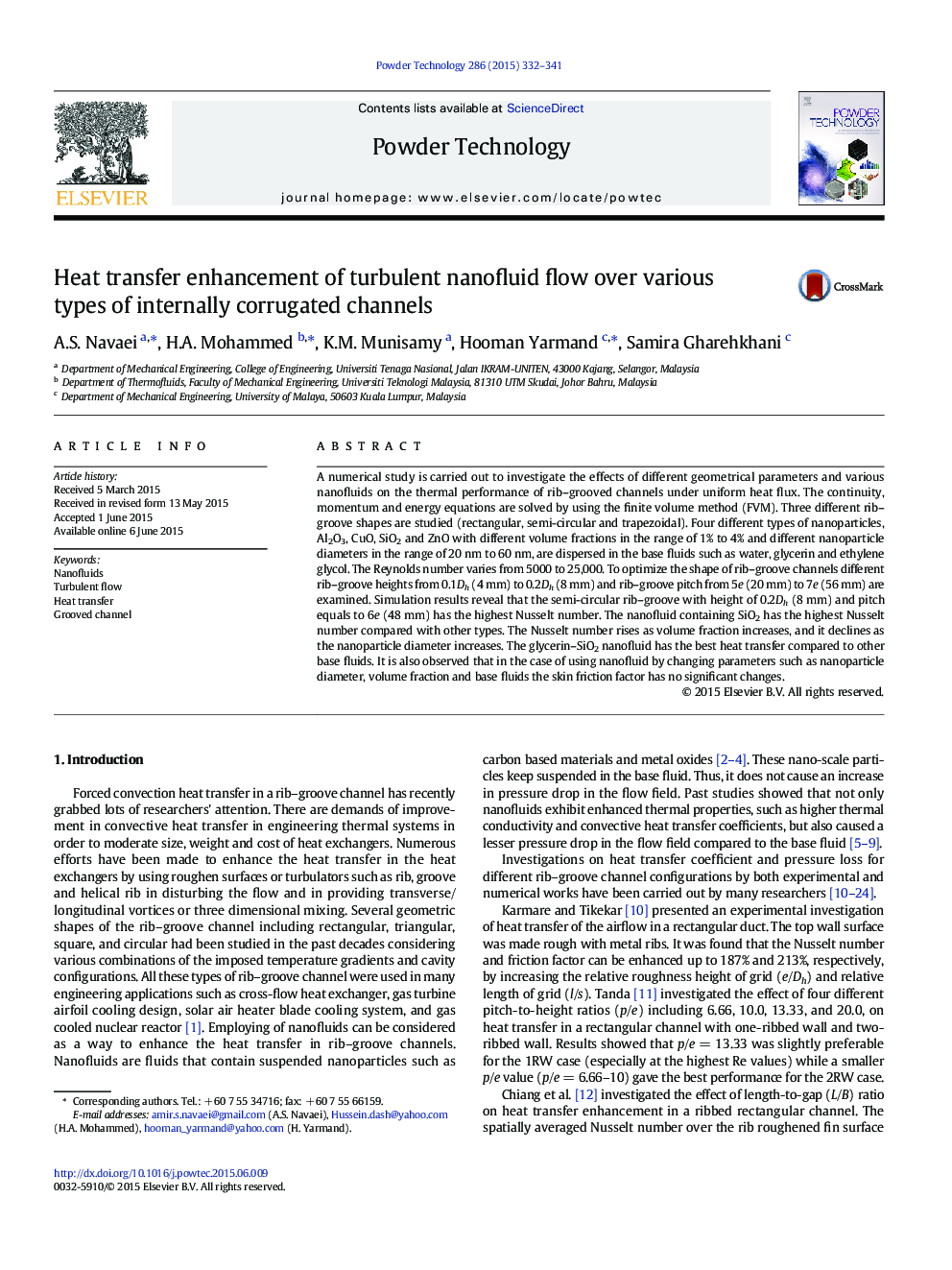| کد مقاله | کد نشریه | سال انتشار | مقاله انگلیسی | نسخه تمام متن |
|---|---|---|---|---|
| 235236 | 465631 | 2015 | 10 صفحه PDF | دانلود رایگان |
• Study the effect of three different rib–groove shapes on the heat transfer characteristics.
• Investigate the effect of four different types of nanofluids on the heat transfer characteristics.
• Examine the effect of different volume fractions and particle diameters of nanoparticles on the heat transfer characteristics.
• Study the effect of three different base fluids on the heat transfer characteristics.
A numerical study is carried out to investigate the effects of different geometrical parameters and various nanofluids on the thermal performance of rib–grooved channels under uniform heat flux. The continuity, momentum and energy equations are solved by using the finite volume method (FVM). Three different rib–groove shapes are studied (rectangular, semi-circular and trapezoidal). Four different types of nanoparticles, Al2O3, CuO, SiO2 and ZnO with different volume fractions in the range of 1% to 4% and different nanoparticle diameters in the range of 20 nm to 60 nm, are dispersed in the base fluids such as water, glycerin and ethylene glycol. The Reynolds number varies from 5000 to 25,000. To optimize the shape of rib–groove channels different rib–groove heights from 0.1Dh (4 mm) to 0.2Dh (8 mm) and rib–groove pitch from 5e (20 mm) to 7e (56 mm) are examined. Simulation results reveal that the semi-circular rib–groove with height of 0.2Dh (8 mm) and pitch equals to 6e (48 mm) has the highest Nusselt number. The nanofluid containing SiO2 has the highest Nusselt number compared with other types. The Nusselt number rises as volume fraction increases, and it declines as the nanoparticle diameter increases. The glycerin–SiO2 nanofluid has the best heat transfer compared to other base fluids. It is also observed that in the case of using nanofluid by changing parameters such as nanoparticle diameter, volume fraction and base fluids the skin friction factor has no significant changes.
Figure optionsDownload as PowerPoint slide
Journal: Powder Technology - Volume 286, December 2015, Pages 332–341
